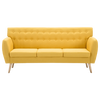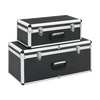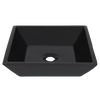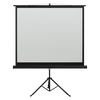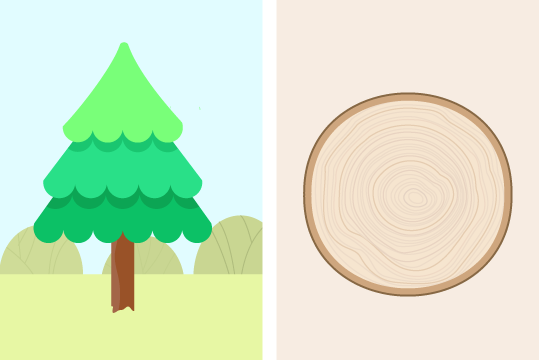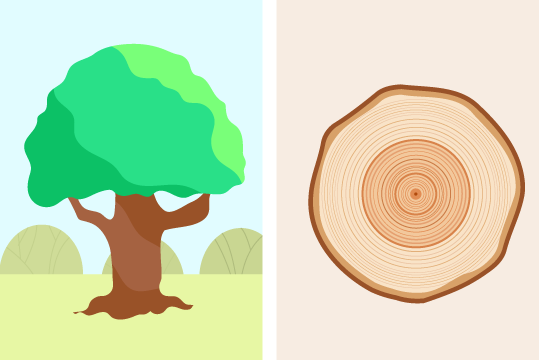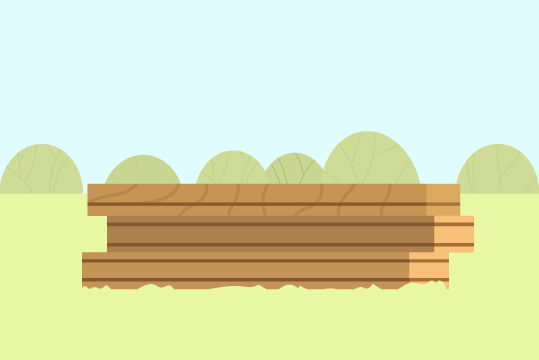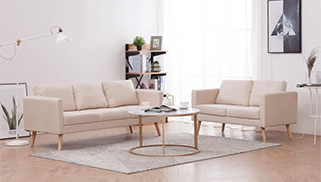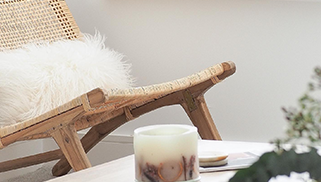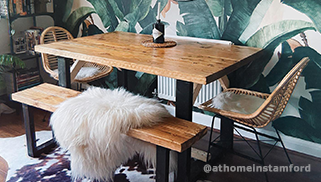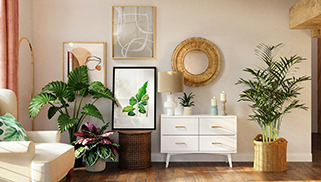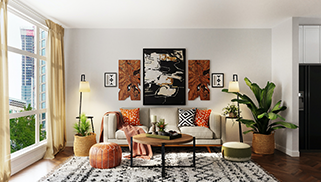Know the 3 different main wood types: softwood, hardwood, and engineered wood
Softwood, hardwood, and engineered wood are the three main wood types for furniture. In this wood furniture guide, we want to clarify common myths and explore the properties, strengths, or popular uses of these wood types.
Softwood furniture has some great advantages. It’s more affordable compared to hardwood, making it a wonderful option for budget-conscious buyers. Additionally, softwood furniture has a lighter weight, so they’re easier to move around.
Another common use of softwood furniture is in outdoor settings for garden furniture. Softwood's natural resistance to elements, when treated and maintained, makes it fit for outdoor conditions. Regular maintenance like staining, varnishing, and applying protective coatings improve its durability and lifespan.
-
What’s hardwood?
Hardwood comes from trees with leaves and seeds, such as oak, maple, mahogany, and walnut. Unlike softwood, which comes from evergreen trees, hardwood is more resilient. This is because they grow slower and have a more compact structure, so the wood is denser. Bamboo (which is a treelike plant) and palm share the same characteristics as hardwood. You can sometimes find them under the engineered wood label.
Hardwood furniture offers a wide range of colours, interesting grains, and a natural ability to withstand wear and tear. Its quality makes it a long-lasting investment, as hardwood pieces can be passed down through generations.
What’s engineered wood?
Engineered wood, also known as composite wood or man-made wood, is a versatile material used in furniture construction. Unlike solid wood, which comes from trees, engineered wood is created by putting together layers of wood veneers or fibres with adhesives and resins. The most common types of engineered wood are Plywood, Medium Density Fibre Board (MDF), and Composite Board.
-
One of the main advantages of engineered wood furniture is its greater durability. The production process gives it better stability and resistance to warping, shrinking, or expanding due to changes in temperature and humidity. This makes engineered wood furniture durable in many different environments.
Engineered wood also offers more diversity compared to natural wood. It is available in a variety of finishes, including veneers that look like popular hardwood species, giving more design possibilities. The use of engineered wood is more sustainable, as it can be made from recycled wood fibres or fast-growing tree species.
Engineered wood furniture is sturdy and long-lasting. To grow its lifespan, there are some care rules you can follow:
- Avoid liquid spills. Clean up any spills right away with a dry cloth or paper towel.
- Use gentle cleaning products like mild cleaners specially made for wood surfaces. Avoid harsh chemicals that can damage the finish.
- Protect it from direct sunlight, high humidity, and extreme temperatures.
- For more specific care advice, always turn to the manufacturer's guidelines.
Why is wood sometimes wet or greenish when delivered?
Have you ever wondered why your wooden outdoor furniture sometimes looks wet or greenish when it’s delivered? The answer comes from a process called wood impregnation.
Wood impregnation is a technique that means treating wood with chemicals to make it last longer. The wood is placed in a container and a combination of preservative chemicals is applied under pressure. This pressure lets the chemicals get deep into the wood fibres, giving it long-lasting protection. Wood impregnation makes the wood more durable, strong, and resistant to pests or decay.
The type of preservative that is used in impregnation affects the colour of your wooden furniture. Some preservatives, such as those based on copper, can give wood a blue or green look. The chemical reaction between the preservative and the wood fibres causes this colouring. When the wood dries or is exposed to sunshine, the green hue fades away.
Wood impregnation greatly lowers the risk of rot, fungal growth, and insect damage. Impregnated wood withstands moisture, changes in temperature, and other environmental factors that cause damage over time. This makes it ideal for outdoor furniture, decking, and other applications where exposure to the elements is a concern.
What are the benefits of impregnated wooden furniture?
- Long-term investment: Compared to untreated wood, it has a longer lifespan. This makes it a more economical choice over time.
- Durability: Impregnation keeps the original beauty of the wood by protecting it against warping, cracking, and splitting.
- Low maintenance: Impregnated wood needs little upkeep because it’s already protected against common risks like decay and insect infestation.
Next time you buy wooden outdoor furniture that’s wet or looks greenish, you’ll know that it’s normal for wood impregnation. Just wipe the greenish spots down with a dry cloth and let them dry – they’ll soon disappear. Wood impregnation keeps your outdoor furniture in shape and beautiful for years to come.


